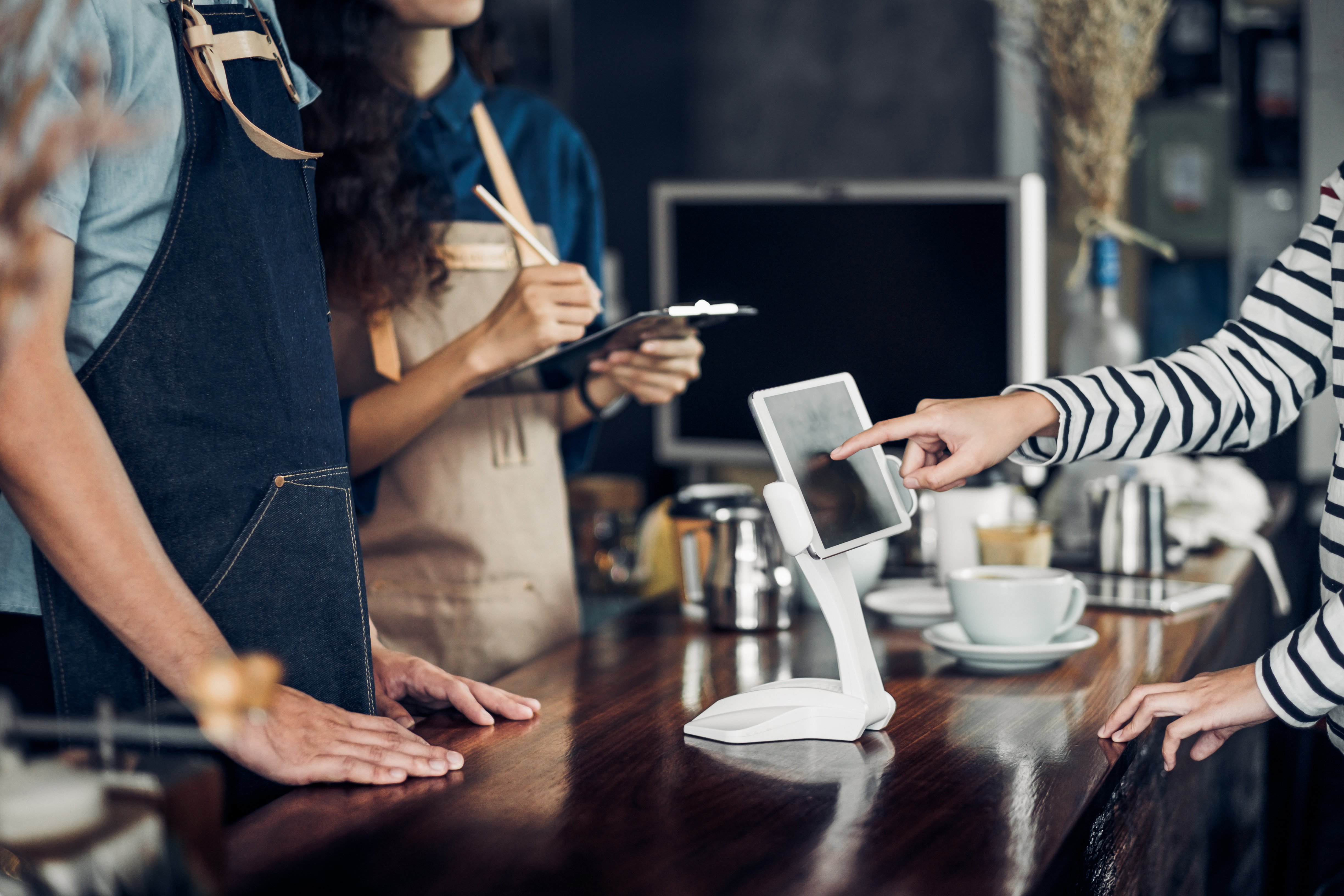Technology is transforming the restaurant industry as the traditionally high-touch industry is becoming more high-tech. Innovative new service and automation solutions are helping restaurants and other facilities with high volumes of food service better support their staff and optimize front-of-house operations.
These restaurant technology solutions are achieving higher levels of efficiency that can also help offset rising costs. A National Restaurant Association survey of 4,200 restaurants found a strong majority of operators have seen steep cost increases across all areas of the business. Many restaurants have had to absorb those costs to remain competitive, rather than passing increases on to customers. As a result, 85% of operators reported a drop in profitability in 2022 compared to 2019 levels.
The introduction of innovative technology can help compete with these rising costs and diminishing profits. Restaurants that are already innovating are not only minimizing the burden on staff, but also boosting brand perception and customer satisfaction, which fosters higher spending per visit and more frequent visits. Below, we outline five of these new and emerging technology trends that are helping restaurants improve profitability and return to pre-2020 levels of success.
1. Server-Held Ordering Services
Every time an order is taken at the table, and waitstaff has to deliver that order to the kitchen or bar, there is a potential for distractions from other tables, errors in the order, and the need to make a second trip to report out-of-stock menu options. Mobile point-of-sale (POS) solutions help minimize the potential for delays without sacrificing valuable face-time with servers.
With reduced time taking orders, waitstaff can more rapidly turnaround tables. This turnaround time can encourage diners to stick around during rush hours. In fact, handheld ordering devices allow your servers to take orders for guests waiting for a table, increasing their chances of waiting for a table. As orders are placed digitally, managers and chefs can identify potential bottlenecks sooner for more prompt service.
The time shaved off of ordering can add up quickly. The Toast Go custom terminals boast that they allow waitstaff to take 2,000 fewer steps and 46 minutes off table time during an average shift. Restaurants increase revenue while placing less demand upon their staff.
2. Customer-Held and Tabletop Payment Solutions
Customer-held and tabletop payment solutions offer the advantages in speed that restaurants find with server-held solutions, with one additional major benefit. By placing the ability to order food instantly in the hands of customers, full-service restaurants tend to see larger checks from diners who use the ordering technology. Solutions like TRAY report that restaurants may see their average check size increase by up to 30% bigger with a tabletop POS solution. Combined with faster table turnaround times, this technology solution can make a significant impact on restaurants’ profitability.
Beyond instant ordering, tabletop payment solutions also make it easier for guests to opt into the loyalty programs that encourage repeat visits. The Ziosk tabletop solution, for example, reports increasing loyalty enrollments by 372% and loyalty sign-ins by 493% for its customers.
3. Autonomous Food Service
All types of food service venues are finding they can better support staff with automated food running and bussing solutions. With attached trays, autonomous food service solutions can deliver food to multiple restaurant tables within a single trip and make bussing more efficient. This support frees employees up for the more value-added customer interactions that generate bigger returns.
Solutions like X1, the autonomous food service solution now offered by SoftBank Robotics, come equipped with a multitude of sensors to ensure collision-free and spill-proof service. X1 can run food and beverages to several tables at a time, charting the most efficient path to tables or back to the kitchen while effortlessly navigating around customers, employees, furniture, and other robots. Better still, autonomous food service solutions like X1 automatically generate data by tracking routes, frequency of use, and other useful information. Restaurant managers can use this insight to identify peak demand times and other service trends for more effective staff scheduling, for example.
4. Real-Time Customer Feedback
Diner reviews can be a powerful marketing tool for restaurants, and now automated solutions can help restaurants more effectively harness that power. Guest feedback platforms enable restaurants to collect more of the useful diner feedback that can attract future guests and guide marketing efforts, while increasing customer satisfaction and loyalty.
Guest feedback platforms enable restaurants to find out faster how customers feel about service. Solutions like Ovation feature customer chat options that allow restaurants to engage with guests in the moment to resolve concerns, minimizing the delays that come with responding to online reviews. Rather than encouraging restaurants to make changes based on any poor review, platforms like Tattle use the accumulation of data and machine learning algorithms to guide restaurant operators to the most impactful adjustments.
5. Labor Management and Employees Experience Solutions
Many of the customer-facing automation solutions listed above are aimed at reducing the burden on staff. They’re not alone, as the restaurant industry now has a range of employee experience platforms available to improve demand forecasting, speed payouts, and build stronger teams.
Solutions like 7Shifts use connected communication tools to secure and deliver insight that helps managers keep a pulse on their team’s engagement and satisfaction. Through its integrated communication tools, waitstaff can more easily update schedules without creating gaps in service. This is the type of in-demand shift flexibility that 7Shifts says helps its users reduce turnover by up to 13%.
Do More with Your Data
In order to remain competitive, restaurants navigating labor challenges and evolving diner expectations will have to future-proof their operations by adapting how they interact with staff and diners. This is where today’s technology trends truly give restaurant operators an edge. By delivering actionable data, technology solutions can help restaurant managers make more informed decisions that can ultimately improve profitability.
This is an area where SoftBank Robotics America gives restaurant operators an edge. Solutions like X1 are part of SBRA’s broader robotics ecosystem. By integrating a range of automation solutions across restaurant portfolios and hospitality environments, organizations gain powerful insight that can help drive more proactive decision-making. To learn more about how you can harness this insight, schedule a consult with an SBRA automation expert today.







